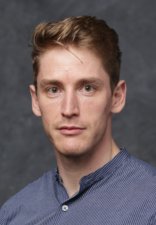Circular-Ranging Optical Coherence Tomography – Frequency comb benefits
Norman Lippok, Massachusetts General Hospital and Harvard Medical School
Optical coherence tomography (OCT) is a powerful three-dimensional, micrometer-scale resolution imaging modality, with impactful clinical applications in ophthalmology and increasing acceptance in cardiology, dermatology and gastroenterology. Unfortunately, similar to other three-dimensional optical imaging methods, conventional OCT excels in controlled environments but is difficult to deploy over large and dynamic fields. This is further hindered by the need for speed yielding signal bandwidths that cannot be detected with electronics. To address these shortcomings, we developed methods to efficiently interrogate sparse scattering fields. Frequency comb sources are used to fold the depth space of interferometric signals thereby superimposing signals from equispaced locations in a circular manner through optical subsampling. As a result, signal acquisition barriers that have limited speed and field can be avoided. In this talk, I will discuss benefits and challenges of Circular-Ranging OCT and describe new ultrafast frequency comb laser designs that achieve imaging of multi-cm3 fields up to 7.5 volumes per second.


